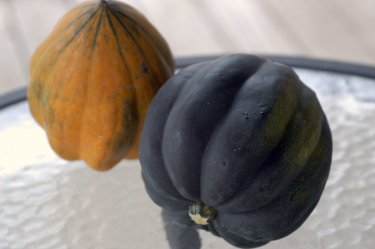 Saturday morning, we picked up our CSA veggies. Look! Potatoes! And green onions!
Saturday morning, we picked up our CSA veggies. Look! Potatoes! And green onions! Itty bitty thinned carrots! And carrot tops, which I use like parsley.
Itty bitty thinned carrots! And carrot tops, which I use like parsley.
And turnips! Er, turnips. What do you do with turnips? (To start with, you refrigerate them. I learned the hard way.)

I thumbed through my eleventy-billion cookbooks and finally settled on Turnips in Mustard Sauce from How to Cook Everything Vegetarian. This cookbook is great for "what am I going to do with this?" cooking. And it didn't let me down.
I don't like to post recipes from cookbooks unless I change them significantly, but let's take a look at braising. Braising is great for root vegetables. Carrots, potatoes, beets, even radishes, are great braised. So no surprise that it worked well for turnips.
To braise, cut the vegetables into equal sized pieces so it cooks evenly. This can be hard with something knobby, but braising isn't about perfection. Brown the vegetables in a bit of oil. Sprinkle with some good old salt and pepper. Then add about a cup of flavorful liquid (I used vegetable broth this time, but wine works great, too) and simmer covered until the food is tender.
And here is the beauty of braising. After the food is cooked through, remove it to a bowl and leave the drippings in the pan. This is where the magic happens. Add a bit of starch to thicken (the recipe called for cornstarch, but the only starch I had was mystery bulk bin flour. Possibly spelt flour. Or maybe whole wheat pastry flour.) It doesn't really matter what starch you use, what does matter is that you mix it with a bit of liquid before adding it to the pan. This will prevent dreadful clumps from ruining your sauce. Add any seasonings you like (like mustard!), and cook until reduced to a thickish sauce.
Drizzle your pan sauce over the braised vegetables and sprinkle on whatever herbs you have on hand. Braises aren't always pretty, but a sprinkle of herbs will cleverly disguise this. (Jazz hands!) I used carrot tops. Because it's all I had.
We just moved into a new house, and the kitchen is the only room we haven't unpacked yet. Which is why I cobbled lunch together from some soggy unrefrigerated turnips, carrot tops, and mystery flour. But it was a tasty cobble, so don't hold it against the turnips.









